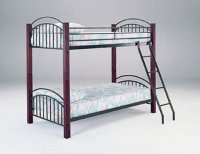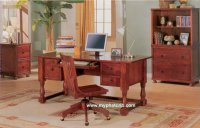Modern Living: create extra space
Thursday, January 8th, 2009Wanting more space has become a mantra for our time, as though space were a necessity rather than a preference. But the only way to make it work successfully is to know why you want it, and in order to do that, you have to start prioritizing. What space is currently available and how do you use it? Where would you like more space and where could you manage with less? Which is more important to you: storage space for personal possessions or living space for family and friends?
The secret to creating extra space is getting to know your home and thinking practically about your lifestyle, then putting the two together and seeing what compromises and adjustments need to be made. Take it slowly and do not act on a whim: short-term wants may not fulfill long-term needs, and decorating a house - even a small one - is a long-term investment.
Be guided by the style of the architecture, but do not let it dictate to you. The fact that a building is old, for instance, does not prohibit you from decorating the space in a modern style. The beauty of period buildings is their individuality. Elegant lines, interesting architectural details - even uneven walls - all contribute their own natural character, and keeping your decoration and furnishings clean and contemporary is one of the most effective ways to enhance them. Concentrate on the space, not the facade or interior fittings. Doors and fireplaces can always be removed or replaced, walls and stairs moved or remodelled, but the space is yours, so make sure that it works for you.

 Bunk beds
Bunk beds But now homeowners, designers, and manufacturers are taking a figurative step back, and a second wave of office design is the result. After all, if it’s your home, why dress it like a steno pool?
But now homeowners, designers, and manufacturers are taking a figurative step back, and a second wave of office design is the result. After all, if it’s your home, why dress it like a steno pool?
